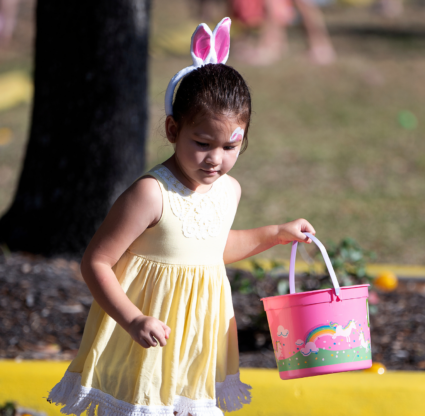Bridget Davis recalls her youngest, Kace, at 9 months old, floating on his back in the pool. The boy started swim lessons when he was 4 months old. Three years ago, Bridget, who moved her family to the Gulf in 2018, had been looking to start a business they could involve the children in. She’d been interested in early swim safety for some time and decided to open a Bonita Springs location for Goldfish Swim School. Her kids had taken lessons with Goldfish when the family lived in Pennsylvania.
In a region defined by its Gulfside location, swimming is a must-learn skill. Bridget—with her husband, Jeff—aims to empower young’uns to safely enjoy the water through her family-run swim school. With a spectrum of instruction for kids up to 12, the Goldfish team advises parents to enroll infants as young as 4 months old. According to the CDC, drowning is the leading cause of death for children ages 1 to 4 in the U.S. “You read these stories that are so heartbreaking,” Bridget says. “And it really can happen to anyone—and it can happen so quickly.” She points to a National Institute of Health study which found swim lessons reduce the risk of drowning for kids under 3 (the most vulnerable population) by 88 percent.
At Goldfish Swim School, a max four-to-one swimmer-to-instructor ratio ensures dedicated attention for each little swimmer. The weekly 30-minute lessons are broken up by age and skill level. For infants, instructors guide parents on breath control and getting babies used to the water. With toddlers, instructors simulate scenarios, like what to do if they fall into a pool, helping build muscle memory to swim to the nearest ledge and pull themselves out. Older kids work on swimming independently and toward developing competitive butterfly and freestyle strokes. Goldfish also hosts internal swim meets for students, complete with pizza and prizes, to help kids implement their skills.
The indoor facility’s comforts impress parents and kiddos alike: A heated saltwater pool has a separate viewing room for parents, plus swimsuit dryers, changing rooms, hair-drying stations, and there’s a Snack Shack for after class. Wet and dry areas are smartly separated to avoid slips.
The oldest Davis kids, 10-year-old Tia, and 7-year-old twins, Jax and Sloan, often hang out around the snack shack or pro shop. “Kace just runs around eating snacks all day,” Bridget says of her youngest. Though there are lifeguards on watch, when the 3-year-old goes for a dip, they know, if he needs, he can pull himself right back out.
Bridget’s Swim Safety Tips
Train Their Instincts
Think prevention: While you want to teach your kiddos to have fun in the water, they should also understand that beaches, lakes and pools can be dangerous. Teach them to respect the water and instill strategies to help themselves in case of accidental falls. At Goldfish, instructors train toddlers to swim to the wall closest to them (instinctively, kids swim toward the first wall they see, which is often the one farthest away). Children should learn to float on their backs to catch their breath while swimming or while waiting for help. If there’s another kid or an animal in trouble, teach your children to “throw, don’t go” by tossing in a flotation device and calling for help rather than risking both their lives.
Install Layers of Protection
Implement multiple fail-safes, starting with the doors around your house. All doors and gates that lead to water should be properly shut with locks that only an adult can reach and open. Closer to the water, install an automatically locking pool gate, invest in sensors that tell you if there’s unexpected movement in the water and always have kids wear a life vest, especially on watersports vessels. “Swim lessons are an important layer of protection as well,” Bridget says. “Taking formal swim lessons can reduce the risk of drowning by 88 percent.”
Assign a Water Guardian
Designate one responsible adult to monitor swimmers at all times—without any distractions. No phone scrolling! Rotate to a new guardian every 30 minutes to ensure you have an alert watcher on guard. It helps if the guardian is CPR certified, Bridget says. Even if children aren’t swimming, someone should be watching them when there’s water nearby. Many drownings happen when kids run off while parents load the car for a trip or unload the groceries.





